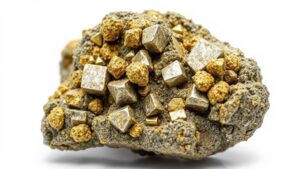How to Pan for Gold in Small Creeks With Minimal Gear
How to Pan for Gold in Small Creeks With Minimal Gear
Gold panning is an accessible and enjoyable hobby that allows individuals to explore nature while seeking the thrill of finding precious metal. For those interested in trying their hand at panning for gold in small creeks, minimal gear is required. This guide will cover essential techniques, necessary tools, and tips for success, making the experience rewarding and educational.
Understanding Gold Deposits
Before embarking on your gold panning adventure, its crucial to understand where gold can be found. Gold is often located in areas where water flow slows down enough for it to settle, typically in bends of a creek and behind rocks.
According to the U.S. Geological Survey, gold occurs in the form of flakes, nuggets, and dust. The heaviest particles drop out of suspension and accumulate in various types of sediments known as pay layers. Knowing how to identify these areas will significantly increase your chances of success.
Essential Gear for Gold Panning
Even with minimal gear, you can effectively pan for gold. The following tools are necessary:
- Gold Pan: A shallow pan with sloped sides, typically 10 to 16 inches in diameter, is ideal. The sloped sides help trap heavier materials.
- Classifying Sieve: This optional tool can help separate larger rocks and debris from the material you want to pan.
- Trowel or Small Hand Shovel: This tool aids in getting material from the creek bed.
- Container for Collecting Gold: Use a small jar or vial for storing your findings.
The Panning Process
Once you have gathered your gear, follow these steps to effectively pan for gold:
1. Finding a Suitable Location
Selection of the right location is vital. Look for a small creek with a history of gold discovery. Many states, such as California and Colorado, have designated gold panning areas. Research historic mining sites or talk to local prospecting clubs for insight into successful locations.
2. Preparing Your Material
Start by collecting sediment from the creek bed. Use your trowel to gather material from areas that appear promising, particularly behind larger rocks and in the bends of the creek. Place this material into your gold pan.
3. Washing the Sediment
Once you have collected a sufficient amount of sediment, fill the pan with water. Hold the pan at an angle, and shake it gently to help the lighter materials wash away. goal is to separate the gold from sand, gravel, and other debris.
4. Sifting for Gold
Continue the washing process by repeatedly adding water and gently swirling the pan. After a few minutes, the heavy materials, including any gold, will settle at the bottom of the pan. You may begin to see black sand and tiny metallic particles, which are good indicators that youre on the right track.
5. Finalizing the Find
As you remove the lighter material, be increasingly cautious, working to expose the heavier particles. If you see shiny flakes or nuggets, congratulations! Carefully transfer your findings to your storage container.
Potential Challenges and Solutions
Panning for gold can be an arduous process with several challenges. Here are common issues and potential solutions:
- Limited Success: It’s important to remember that gold panning often requires patience and persistence. If you are not finding gold, try moving to a different area of the creek.
- Environment: Weather and environmental conditions can impact your experience. Always check weather forecasts and prepare accordingly to ensure a safe panning trip.
Real-World Applications and Benefits
The skills learned through gold panning extend beyond just finding gold. This activity promotes outdoor enjoyment, environmental awareness, and a connection to historical practices. For example, areas affected by prospecting sometimes encourage community events, educational programs, and conservation efforts that preserve local ecosystems.
Conclusion and Actionable Takeaways
Panning for gold in small creeks with minimal gear is a feasible and exciting hobby for enthusiasts of all ages. By understanding gold deposits, utilizing simple tools, and following a structured process, individuals can enhance their chances of finding gold.
To get started, research local sites with a rich history of gold discovery, gather your essential gear, and head to the creek with an open mind and a spirit of adventure. thrill of discovery awaits!

